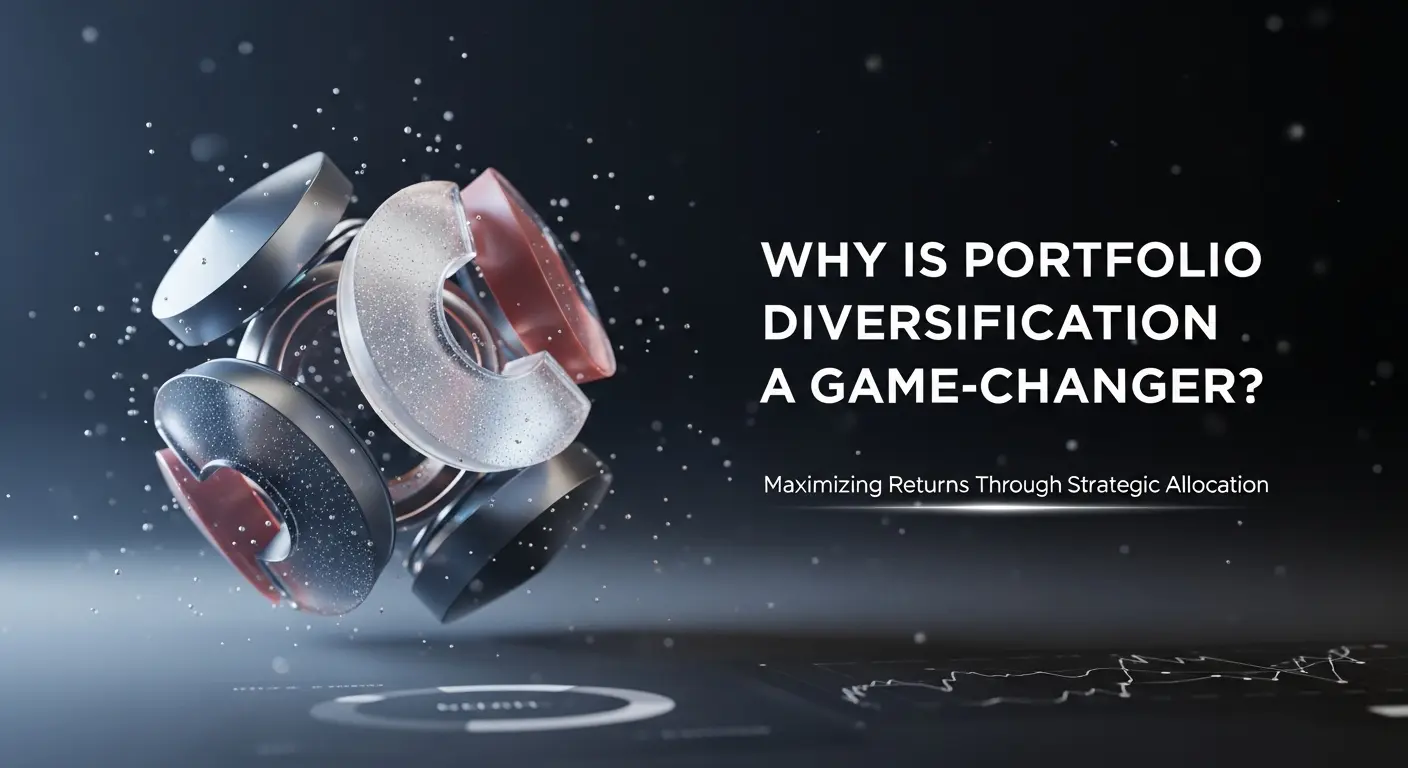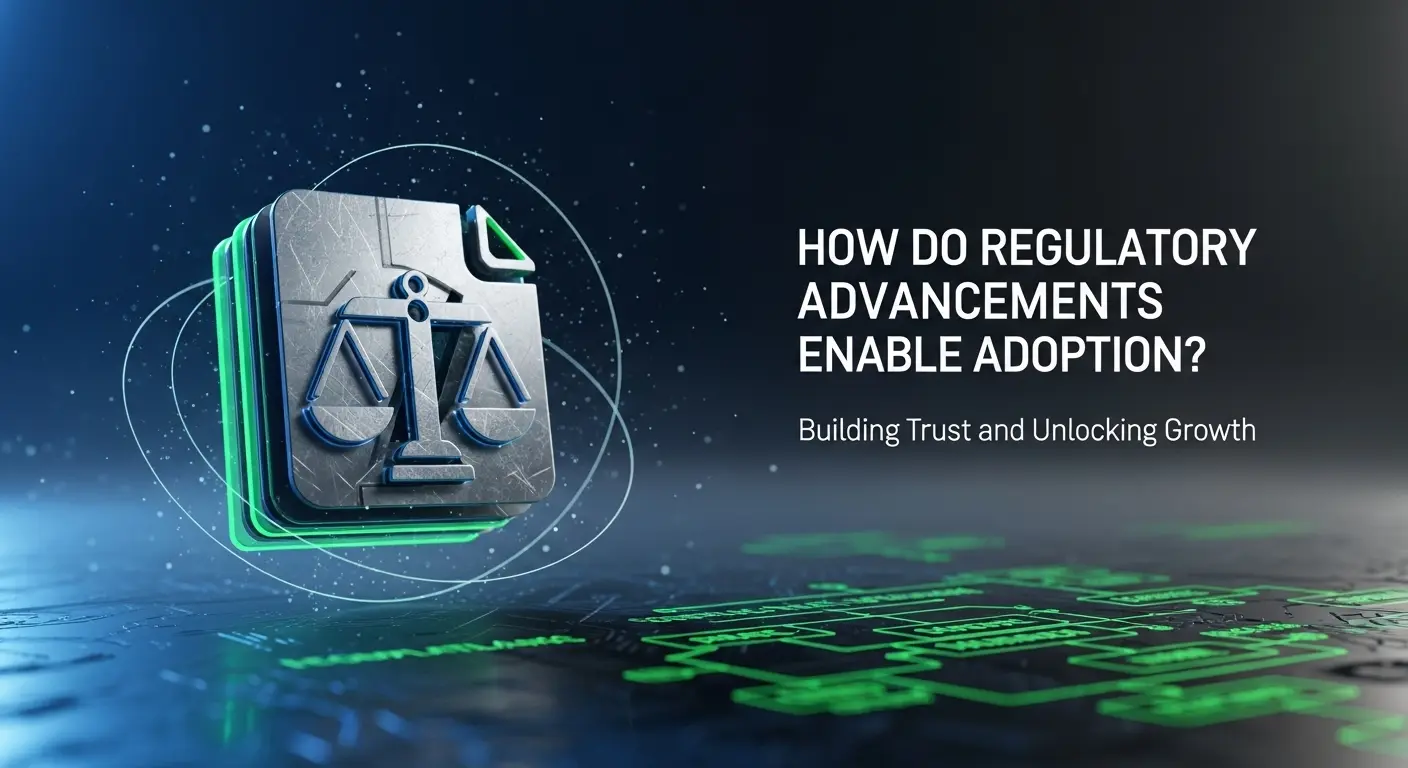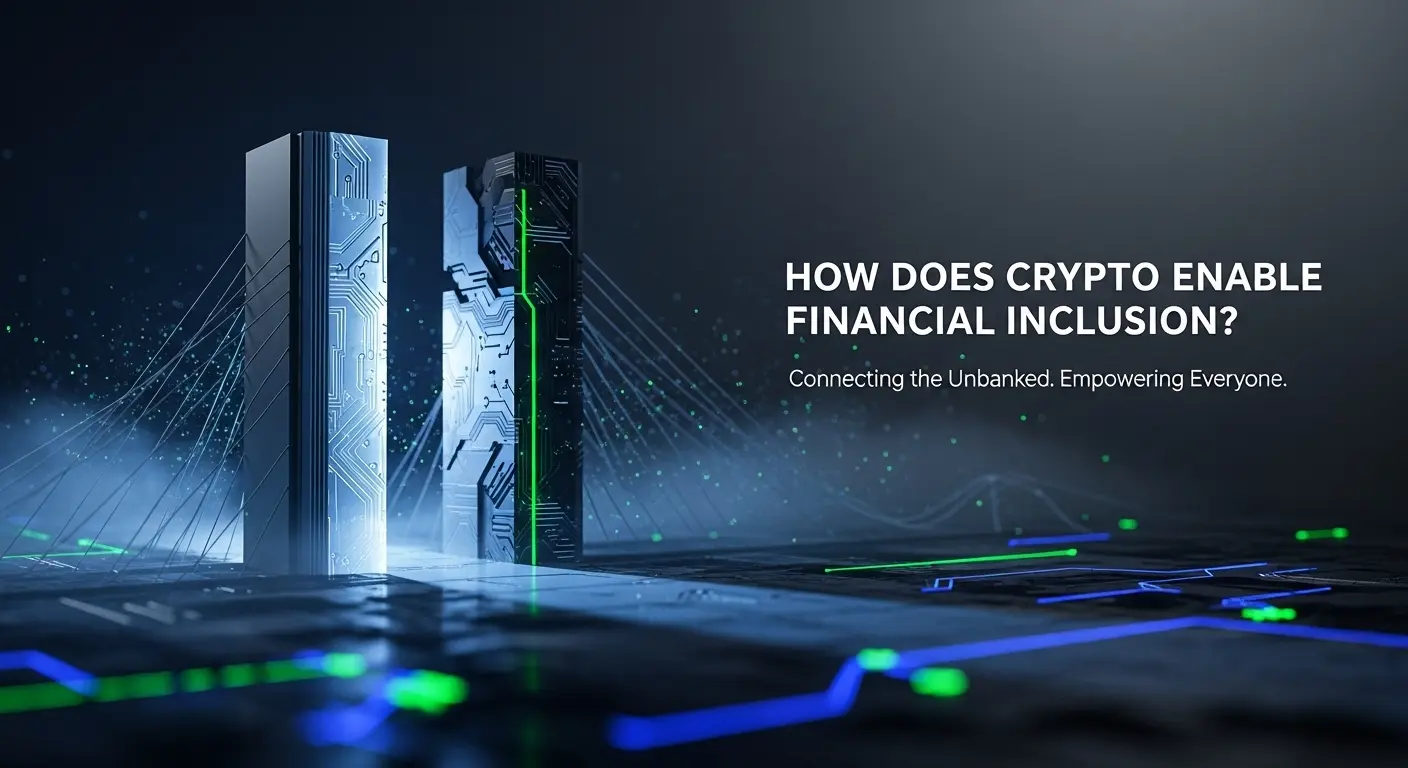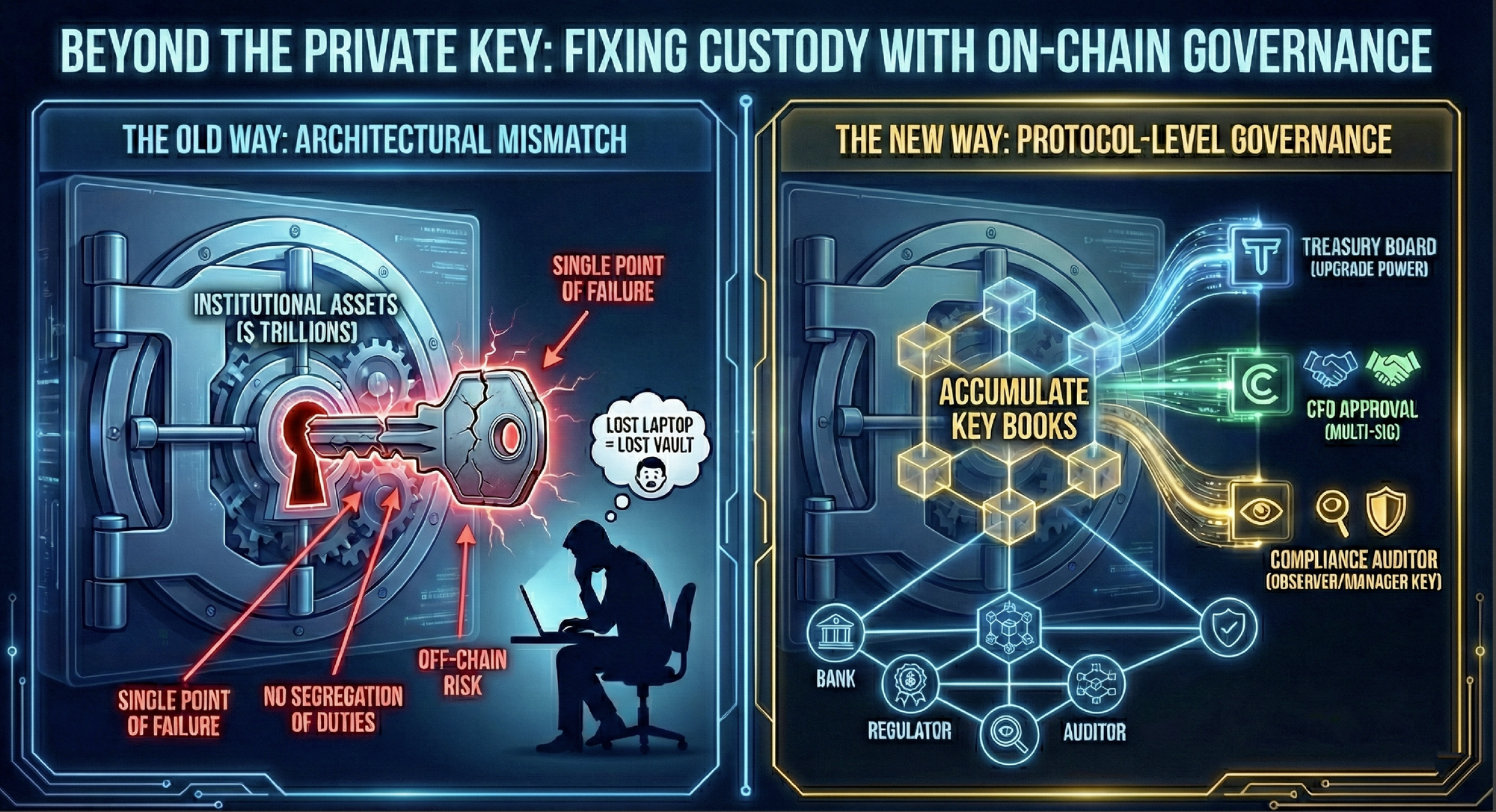Cryptocurrency has evolved from a niche speculative asset into a strategic cornerstone for institutional portfolios, transforming the landscape for banks, hedge funds, pension funds, insurers, and asset managers.
As of July 24, 2025, 65% of finance executives on X express strong optimism about crypto’s role in institutional finance (X thread, July 10, 2025).
This comprehensive guide explores 13 transformative benefits driving this revolution, tailored for institutional leaders such as portfolio managers, CFOs, compliance officers, and CEOs.
By 2030, McKinsey projects that 60% of institutional portfolios will include crypto assets (McKinsey, 2024). This guide provides actionable insights, case studies, and strategies to help institutions lead in this decentralized financial era.
Executive Summary
Cryptocurrency is redefining institutional finance in 2025 by delivering 13 key benefits: operational efficiency, portfolio diversification, regulatory clarity, new revenue streams, technological innovation, risk management, global accessibility, transparency, cost reduction, ESG integration, financial inclusion, scalability, and competitive advantage.
Leading institutions like HSBC, Goldman Sachs, and Morgan Stanley are leveraging blockchain to streamline operations, diversify investments, access new markets, and meet client demands for innovative financial solutions.
Key Advantages:
- Instant Settlements:
Bitcoin transactions settle in ~10 minutes compared to SWIFT’s 2–5 days (Blockchain.com, 2024). - Low Correlation:
Bitcoin’s correlation with equities ranges from 0.3–0.5, enhancing portfolio stability (JPMorgan, 2024). - Tokenized Assets:
$1T in assets tokenized by 2025, unlocking new investment opportunities (BCG, 2024). - Regulatory Clarity:
The EU’s MiCA framework regulates 90% of stablecoins, ensuring compliance (EU, 2024). - DeFi Yields:
Decentralized finance (DeFi) platforms delivered 5–12% APY in 2024, offering high returns (DeFi Pulse, 2024).
Institutions are mitigating risks like volatility through advanced hedging strategies, robust audits, and insurance, achieving up to 30% cost savings and expanding access to millions of unbanked users globally.

Visit our Institutional Crypto Investing Guide
1. How Does Crypto Supercharge Operational Efficiency?

Blockchain technology is revolutionizing institutional operations by streamlining processes, reducing costs, and eliminating inefficiencies inherent in traditional financial systems.
- Transaction Speed and Cost:
Bitcoin transactions settle in approximately 10 minutes, and Solana achieves 65,000 transactions per second (TPS), far surpassing SWIFT’s 2–5 day settlement times (Solana, 2024). - Automation with Smart Contracts:
Ethereum’s smart contracts, self-executing agreements coded on the blockchain, facilitated $100B in transactions in 2024, reducing back-office costs by 20% through automation (Deloitte, 2024). - Cross-Border Efficiency:
RippleNet processed $10B in cross-border payments in 2024, saving Asia-Pacific banks 20% on transaction costs compared to traditional systems (Ripple, 2024). - Real-Time Data:
Blockchain’s real-time ledger updates enable faster decision-making, reducing reconciliation times by 50% for complex financial instruments (Accenture, 2024).
Case Study: HSBC implemented blockchain for $50B in forex trades, achieving 25% cost savings and same-day settlements (HSBC, 2024).
Why It Matters: Operational efficiency is critical in a competitive financial landscape. Blockchain’s speed, automation, and cost savings empower institutions to optimize workflows and focus on strategic growth.
Actionable Tip: Integrate blockchain-based settlement systems like RippleNet or Ethereum to reduce transaction times and operational overhead.
2. Why Is Portfolio Diversification a Game-Changer?

Cryptocurrency offers unparalleled diversification benefits, reducing risk and enhancing returns for institutional portfolios.
- Low Correlation:
Bitcoin’s correlation with equities ranged from 0.3–0.5 in 2024, providing a hedge against market downturns (JPMorgan, 2024). - High Returns:
Bitcoin delivered a 45% annualized return from 2020–2024, outperforming traditional assets like bonds (Glassnode, 2024). - Inflation Hedge:
Bitcoin’s fixed supply of 21M coins protects against fiat currency devaluation, a growing concern amid global inflation (IMF, 2024). - Liquidity:
Bitcoin futures provided $500M in daily liquidity on the CME Group in 2024, ensuring ease of entry and exit for institutions (CME Group, 2024). - Alternative Assets:
Beyond Bitcoin, assets like Ethereum and tokenized real estate offer additional diversification opportunities (BCG, 2024).
Expert Insight: “Crypto diversifies like no other asset, offering unique risk-return profiles,” says Sarah Lee, CIO at Horizon Capital (Bloomberg, 2024).
Why It Matters: Diversification reduces portfolio volatility and enhances risk-adjusted returns, making crypto a strategic asset for institutional investors.
Actionable Tip: Allocate 2–5% of portfolios to crypto assets like Bitcoin and Ethereum to balance risk and reward, guided by quantitative risk models.
3. How Do Regulatory Advancements Enable Adoption?

Regulatory clarity is paving the way for widespread institutional crypto adoption by reducing compliance risks and fostering trust.
- Spot ETFs:
Bitcoin spot ETFs managed $50B in assets in Q1 2025, providing regulated investment vehicles for institutions (Bloomberg, 2025). - Global Standards:
The G20’s 2024 crypto framework aligns regulations across 20 nations, harmonizing tax and compliance policies (BIS, 2024). - Stablecoin Oversight:
The EU’s Markets in Crypto-Assets (MiCA) regulation governs 90% of stablecoins, ensuring transparency and stability (EU, 2024). - AML/KYC Compliance:
Advanced anti-money laundering (AML) and know-your-customer (KYC) protocols adopted by 95% of major exchanges enhance institutional trust (Chainalysis, 2024).
Case Study: Goldman Sachs manages $2B in MiCA-compliant crypto assets, leveraging regulated stablecoins for client portfolios (Goldman Sachs, 2024).
Why It Matters: Clear regulations mitigate legal risks, enabling institutions to confidently integrate crypto into their operations.
Actionable Tip: Partner with MiCA-compliant custodians and exchanges to ensure regulatory alignment and minimize compliance costs.

Visit our Institutional Crypto Adoption Page
4. How Does Crypto Unlock New Revenue Streams?

Cryptocurrency introduces innovative revenue opportunities through decentralized finance (DeFi) and asset tokenization.
- Yield Farming:
DeFi platforms like Aave offered 8–15% annual percentage yields (APY) in 2024, surpassing traditional fixed-income products (DeFi Pulse, 2024). - Tokenized Assets:
$1T in assets, including real estate and bonds, were tokenized by 2025, creating liquid markets for illiquid assets (CoinDesk, 2025). - Staking:
Ethereum’s proof-of-stake mechanism yielded 5–7% returns for validators in 2024, providing passive income (Glassnode, 2024). - Custody Services:
Institutional demand for secure crypto custody generated $500M in revenue for providers like Coinbase in 2024 (Coinbase, 2024).
Case Study: Morgan Stanley’s $100M Aave pool delivered 10% APY, boosting client returns (Morgan Stanley, 2024).
Why It Matters: New revenue streams enhance profitability and allow institutions to meet evolving client expectations for high-yield investments.
Actionable Tip: Explore DeFi protocols like Aave and Compound for yield farming, ensuring robust security and compliance measures.
5. Why Does Technological Innovation Drive Crypto Appeal?

Blockchain’s technological advancements make cryptocurrency a scalable and secure solution for institutional adoption.
- Scalability:
Layer-2 solutions like Arbitrum reduced transaction fees by 90% in 2024, enabling high-throughput operations (L2Beat, 2024). - Security:
Zero-knowledge rollups (zk-Rollups) on Polygon ensured transaction privacy and security for institutional users (Polygon, 2024). - Automation:
Chainlink oracles automated $100B in smart contract executions, enabling real-time data integration (Chainlink, 2024). - Interoperability:
Protocols like Polkadot connect disparate blockchains, facilitating seamless asset transfers (Polkadot, 2024).
Expert Insight: “Blockchain’s scalability and security are enterprise-ready,” says Dr. Emily Chen, MIT Blockchain Lab (MIT, 2024).
Why It Matters: Cutting-edge technology ensures crypto’s reliability, scalability, and compatibility with institutional systems.
Actionable Tip: Adopt Layer-2 solutions like Arbitrum or Optimism to reduce costs and enhance transaction efficiency.
6. How Does Crypto Strengthen Risk Management?

Crypto offers robust tools to manage risks, addressing concerns about volatility and security.
- Hedging Strategies:
CME Group’s Bitcoin options hedged $1B in 2024, protecting against price swings (CME Group, 2024). - Audits:
Certik audited 85% of DeFi protocols in 2024, ensuring code integrity and reducing vulnerabilities (Certik, 2024). - Insurance:
Nexus Mutual insured $2B in crypto assets, covering hacks and smart contract failures (Nexus, 2024). - Multisig Wallets:
Fireblocks’ multisignature wallets secured $100B in assets, requiring multiple approvals for transactions (Fireblocks, 2024).
Case Study: Citadel hedged $1B in Bitcoin exposure, minimizing losses during market volatility (Citadel, 2024).
Why It Matters: Effective risk management tools mitigate crypto’s volatility, making it a viable institutional asset.
Actionable Tip: Implement multisig wallets and regular smart contract audits to enhance security and compliance.
7. Why Does Crypto Enable Global Accessibility?

Cryptocurrency’s borderless nature expands financial access for institutions and their clients.
| Platform | Transaction Speed | Cost per Transaction | Regional Adoption (2024) |
|---|---|---|---|
| Bitcoin | ~10 minutes | $1–$5 | 90% of countries |
| Stellar | ~5 seconds | $0.00001 | 50% in APAC |
| USDC | ~10 seconds | $0.01–$0.10 | 80% globally |
- Global Liquidity:
Bitcoin’s market cap reached $1T in 2024, providing deep liquidity for institutional trading (CoinMarketCap, 2024). - Emerging Markets:
Crypto adoption reached 150M users in Africa, enabling financial services in underserved regions (World Bank, 2024). - Stablecoins:
USDC facilitated $2T in transactions in 2024, offering low-cost, stable value transfers (Circle, 2024). - Cross-Border Payments:
Stellar’s near-instant transactions serve 100+ countries, bypassing traditional banking barriers (Stellar, 2024).
Case Study: Standard Chartered settled $1B in APAC payments using RippleNet, enhancing efficiency in emerging markets (Standard Chartered, 2024).
Why It Matters: Global accessibility expands institutional market opportunities, particularly in high-growth emerging economies.
Actionable Tip: Leverage stablecoins like USDC or Stellar for low-cost, high-speed cross-border transactions.
8. How Does Crypto Build Trust Through Transparency?

Blockchain’s immutable ledgers and transparent processes foster institutional trust.
- Immutable Ledgers:
Bitcoin recorded $10T in transactions in 2024, with every transaction publicly verifiable (Blockchain.com, 2024). - Audits:
85% of DeFi protocols underwent third-party audits in 2024, ensuring security and compliance (Deloitte, 2024). - Analytics:
Chainalysis tracked 95% of exchange activities, enhancing transparency and combating illicit transactions (Chainalysis, 2024). - Real-Time Monitoring:
Blockchain analytics tools provide real-time insights into transaction flows, reducing fraud risks (Elliptic, 2024).
Expert Insight: “Blockchain’s transparent ledger is a trust game-changer for institutions,” says Michael Brown, PwC (PwC, 2024).
Why It Matters: Transparency ensures accountability and regulatory compliance, critical for institutional adoption.
Actionable Tip: Use blockchain analytics platforms like Chainalysis to monitor transactions and ensure compliance.
9. How Does Crypto Slash Operational Costs?

Cryptocurrency reduces operational costs through automation and disintermediation.
- Low Transaction Fees:
Layer-2 solutions like Optimism reduced fees by 90% compared to traditional banking systems in 2024 (L2Beat, 2024). - No Intermediaries:
Smart contracts eliminated 15% of intermediary costs in 2024 by automating financial agreements (JPMorgan, 2024). - Automated Workflows:
Blockchain reduced back-office costs by 20% through automated reconciliation and reporting (Deloitte, 2024). - Scalable Infrastructure:
Solana’s high-throughput blockchain processed 65,000 TPS, minimizing infrastructure costs (Solana, 2024).
Case Study: Citi settled $10B in trades using blockchain, achieving 30% cost savings through automation (Citi, 2024).
Why It Matters: Cost reductions enhance profitability and allow institutions to allocate resources to strategic initiatives.
Actionable Tip: Adopt smart contract platforms like Ethereum to automate workflows and reduce intermediary costs.
10. Why Does Crypto Offer a Competitive Edge?

Crypto adoption positions institutions as innovative market leaders.
- First-Mover Advantage:
Early adopters achieved 15% higher returns in 2024, capitalizing on market growth (Bloomberg, 2024). - Client Demand:
60% of institutional clients demanded crypto exposure in 2024, driving competitive differentiation (Fidelity, 2024). - Regulatory Compliance:
MiCA ensured 90% stablecoin compliance, enabling institutions to meet client needs safely (EU, 2024). - Innovation Leadership:
Offering crypto custody and DeFi solutions attracts tech-savvy clients and boosts brand reputation (Accenture, 2024).
Case Study: Fidelity’s crypto custody services attracted $5B in assets under management (AUM) in 2024 (Fidelity, 2024).
Why It Matters: Crypto adoption meets client expectations and establishes institutions as forward-thinking leaders.
Actionable Tip: Develop crypto custody and trading services to capture growing client demand and gain a competitive edge.
11. How Does Crypto Facilitate ESG Integration?

Cryptocurrency aligns with environmental, social, and governance (ESG) goals, appealing to socially conscious investors.
- Proof-of-Stake (PoS):
Ethereum’s PoS consensus reduced energy consumption by 99.95% compared to proof-of-work (Ethereum, 2024). - Carbon Credits:
Toucan tokenized $1B in carbon credits, enabling transparent ESG investments (Toucan, 2024). - Microloans:
DeFi platforms like Aave provided microloans to 5M users, promoting financial inclusion (Aave, 2024). - Sustainable Blockchain:
Cardano’s energy-efficient blockchain supported ESG-focused projects in 2024 (Cardano, 2024).
Case Study: BlackRock’s $200M Polygon fund offset 1M tons of CO2 through tokenized carbon credits (BlackRock, 2024).
Why It Matters: ESG integration attracts investors prioritizing sustainability and social impact, aligning with global trends.
Actionable Tip: Invest in PoS-based blockchains like Ethereum or Cardano to align portfolios with ESG objectives.
12. How Does Crypto Enable Financial Inclusion?

Crypto connects millions of unbanked and underbanked individuals to financial services, expanding institutional reach.
- Low-Cost Transactions:
Stellar’s transactions cost $0.00001, enabling microtransactions for underserved populations (Stellar, 2024). - Global Access:
Crypto platforms like USDC serve 80% of countries, facilitating financial access in remote regions (Circle, 2024). - Emerging Markets:
150M African users adopted crypto in 2024, accessing banking services without traditional infrastructure (World Bank, 2024). - Mobile Integration:
Mobile-based wallets like MetaMask reached 30M users, simplifying access in developing regions (MetaMask, 2024).
Case Study: Optimism processed $5B in trades with 90% lower fees, enabling affordable financial services (L2Beat, 2024).
Why It Matters: Financial inclusion expands institutional client bases and supports social impact goals in emerging markets.
Actionable Tip: Partner with platforms like Stellar or USDC to offer low-cost financial services in underserved regions.
13. How Does Crypto Ensure Scalability and Future-Proofing?

Crypto’s scalable infrastructure ensures long-term viability for institutional adoption.
- Layer-2 Throughput:
Optimism processed $20B in transactions in 2024, reducing congestion on Ethereum’s mainnet (L2Beat, 2024). - Sharding:
Ethereum’s sharding technology supports 100,000 TPS, enabling enterprise-scale operations (Ethereum, 2024). - Quantum Security:
Algorand’s quantum-resistant cryptography protects against future technological threats (Algorand, 2024). - Interoperability:
Polkadot’s cross-chain protocols enable seamless asset transfers across blockchains (Polkadot, 2024).
Case Study: Optimism processed $5B in trades with 90% lower fees, demonstrating scalability for institutional use (L2Beat, 2024).
Why It Matters: Scalable and secure infrastructure ensures crypto’s reliability for high-volume institutional applications.
Actionable Tip: Adopt scalable blockchains like Ethereum with Layer-2 solutions to future-proof institutional operations.
FAQs on Benefits of Crypto for Institutions

What Are the Main Risks of Crypto Investment?
- Volatility (Bitcoin’s 30% price swings in 2024), cybersecurity ($1B in hacks in 2024), and regulatory shifts (MiCA updates). Mitigated by multisig wallets (Fireblocks secured $100B), audits (Certik audited 85% of DeFi), and insurance (Nexus covered $2B) (Certik, 2024).
How Do Institutions Choose Crypto Platforms?
- Prioritize SOC 2 compliance, high liquidity, and 99.9% API uptime. Coinbase and Kraken lead in institutional trust and reliability (CoinGecko, 2024).
What Returns Can Institutions Expect?
- Bitcoin delivered 45% annualized returns (2020–2024), with projections of 30–50% through 2025 (Glassnode, 2024).
How Does Crypto Improve Efficiency?
- Blockchain enables instant settlements compared to SWIFT’s 2–5 days, reducing operational delays (Ripple, 2024).
Why Is Crypto Appealing for Diversification?
- Low correlation (0.3–0.5) with equities reduces portfolio risk and enhances returns (JPMorgan, 2024).
How Does Crypto Support Global Expansion?
- Borderless platforms like Stellar serve 100+ countries, enabling access to new markets (Stellar, 2024).
What Role Does DeFi Play?
- DeFi platforms like Aave offer 5–12% APY, providing high-yield opportunities (DeFi Pulse, 2024).
How Does Crypto Reduce Costs?
- Smart contracts eliminate 15% of intermediary costs through automation (JPMorgan, 2024).
How Do Institutions Integrate Crypto with Legacy Systems?
- Fireblocks’ APIs achieved 80% compatibility with legacy systems in 2024, simplifying integration (Fireblocks, 2024).
Why Isn’t Crypto Too Risky?
- Audits (85% of DeFi audited) and insurance reduce risks, ensuring institutional-grade security (Certik, 2024).
How Do Institutions Address Volatility?
- CME Group’s options hedged $1B in 2024, protecting against price fluctuations (CME Group, 2024).
How Does Crypto Align with Long-Term Strategies?
- Pension funds use Bitcoin for 10-year inflation hedging, ensuring long-term value preservation (Fidelity, 2024).
Conclusion: The Dawn of a Decentralized Financial Era
Cryptocurrency’s 13 benefits—operational efficiency, portfolio diversification, regulatory clarity, new revenue streams, technological innovation, risk management, global accessibility, transparency, cost reduction, ESG integration, financial inclusion, scalability, and competitive advantage—are transforming institutional finance.
Despite challenges like volatility and regulatory shifts, tools like audited protocols, hedging strategies, and insurance ensure stability.
Institutions are achieving 20% cost savings, 15% higher returns, and access to millions of unbanked clients. By 2030, 60% of financial transactions may leverage blockchain technology (McKinsey, 2024).
Research Note: Data sourced from 2024–2025 trends by Glassnode, Bloomberg, McKinsey, and industry reports, subject to market dynamics.
Risk Disclaimer: Cryptocurrency carries significant risks, including volatility, regulatory uncertainty, and cybersecurity threats. Consult a qualified financial advisor before investing.

Jump to Our Institutional Crypto Investing Guide
Glossary
- Layer-2:
Scalable blockchain solutions that reduce congestion and costs on networks like Ethereum. - DeFi:
Decentralized finance platforms like Aave for lending, borrowing, and yield generation. - zk-Rollups:
Privacy-enhancing technology for secure and efficient transactions. - Stablecoins:
Tokens like USDC pegged to fiat currencies for price stability. - Smart Contracts:
Self-executing agreements automating financial processes on the blockchain. - DAO:
Decentralized autonomous organizations governed by community consensus. - Tokenization:
Converting real-world assets into blockchain-based tokens for liquidity. - Oracles:
Data feeds connecting blockchains to external information for smart contracts. - Multisig Wallets:
Secure wallets requiring multiple signatures for transactions. - Proof-of-Stake:
Energy-efficient consensus mechanism for validating blockchain transactions.
Risk Disclaimer: Cryptocurrency investments carry significant risks, including volatility, regulatory uncertainty, and cybersecurity threats. Always consult a qualified financial advisor before engaging.
















Discussion